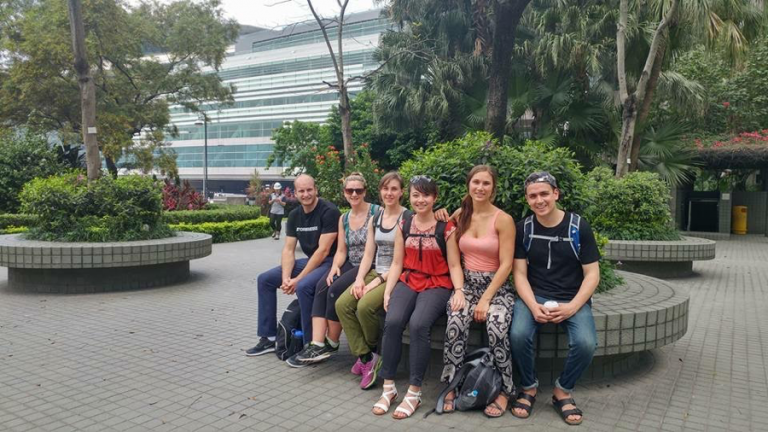Written by Kia Dullemond, MD 2019

(L to R) Hamish Bodnar, Vanessa Montagliani, Cara McCulloch, Joyce Ching, Laura Bruulsema, Kia Dullemond
Not pictured: Jingfei Zhang
Last summer, 7 UBC medical students went to Patan, Nepal, just outside Kathmandu. A brilliant assault on the senses, Nepal is a country rich in history, culture, and natural beauty. Taking the lead on projects developed by previous iterations of Health Trek Nepal (HTN), we focused on two different projects.
The first was the Health Card project. UBC has ties to Sonrisa Orphanage in Kathmandu and their wonderful director, Bishnu Rai. Coordinating with Bishnu, a local physician, and a local dentist, the team was able to visit the orphanage multiple times with the intention of putting together a longitudinal health record for each child, in order that they could better fulfill their medical needs. The team got to participate in measuring height, weight, and taking detailed histories of the children’s past medical histories, many of which were eventful due to the difficult circumstances by which they arrived at the orphanage. These documents were digitized in the hope that further iterations of HTN can add onto them, providing a valuable resource for Sonrisa and the children there.
The second project was Photovoice, a qualitative research project aimed at capturing health perspectives of the children at Sonrisa orphanage. A novel research tool, Photovoice involves empowering the participants to retrieve their own data. Asking simple prompts like “What types of behaviours are healthy to you? What types of behaviours are unhealthy?” children were given cameras and were asked to capture these events in their own understanding, or to even draw them. After a few days, we had the opportunity to hold focus groups with the children, with the help of translators, and elicit more nuanced explanations of why they took the pictures they took, and how they understand their own health, the health of their communities, and the factors at play that support or endanger their health.
In addition to these projects, we had the immensely fulfilling opportunity to partner with medical students from the local medical school, the Patan Academy of Health Sciences (PAHS), where we held workshops on societal barriers to health, cultural exchanges, and self-care. We also had the opportunity to spend lots of time outside the classroom with the students, exploring different parts of their city from the local perspective.
To top it all off, some of us had the opportunity to go trekking in the Nepali Himalayas. From Ghorepani Poon Hill to Annapurna Base Camp to Everest Base Camp, we had the opportunity to climb up to 5,500 m and see the awe inspiring peaks unlike anything we had seen before.
Nepal is a poverty-stricken country that unfortunately was dealt a severe blow by two earthquakes over 8.0 in 2015. Re-building is slow for numerous reasons. Despite the challenges that come from spending time in an extremely poor and developing countries, Nepal makes up for it with its warm people, rich experiences, and vast array of beautiful things to see.